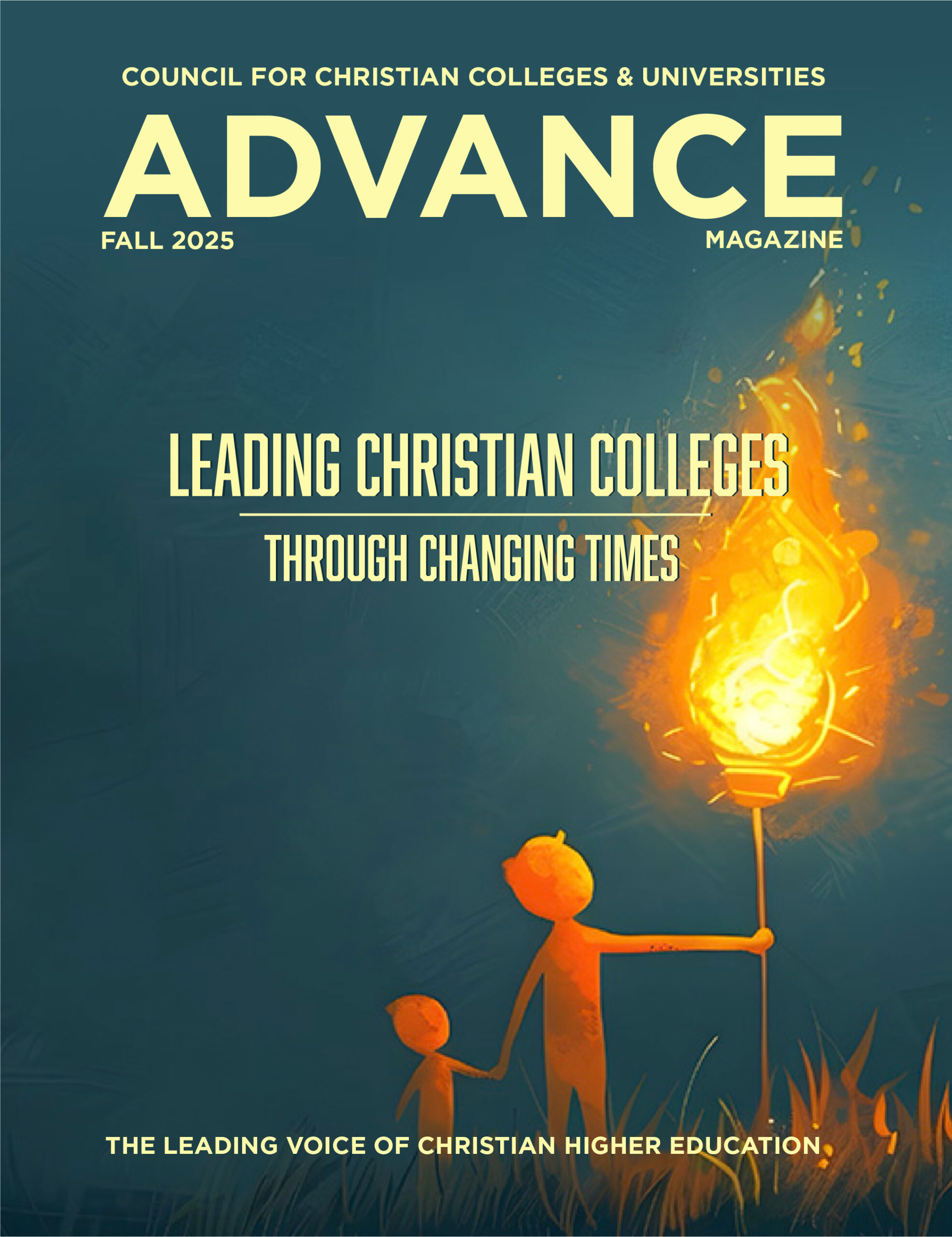Magazine
In his 2016 keynote speech at the CCCU’s 40th Anniversary Gala, David Brooks, New York Times columnist and bestselling author, noted that Christian colleges and universities “have what everybody else is desperate to have: a way of talking about and educating the human person in a way that integrates faith, emotion, and intellect.” Brooks’ latest bestseller, The Second Mountain: The Quest for a Moral Life, explores some of those same themes, but in the context of his own journey. Devastated by the failure of his first marriage, Brooks enters a midlife crisis and emerges with a clear vision of “the prison of individualism” that had shaped his way of thinking. The metaphor of two mountains contrasts different moral worldviews, Brooks says – individualist and relationalist; ego versus heart and soul.
Climbing the first mountain requires the building up of ego and defining the self, acquiring resume values, and conquering the world by being ambitious, strategic, and independent. Reaching the pinnacle of the first mountain often lays bare its inability to truly fulfill us. Here, Brooks points not merely to a different path but to an altogether different place – the journey to the second mountain. Through the valley and wilderness, we can shed our egos to become relational, intimate contributors to a greater community on the second mountain. We are not taking another empty step in self-fulfillment but embracing a worldview apart from self.
Brooks is an erudite guide through this journey, weaving his own insights with those of scholars, theologians, poets, and friends to form a rich, intricate, and complex narrative. Yet his challenge to form a secondmountain generation moves this narrative from memoir to manifesto.
In an early chapter, “The Instagram Life,” Brooks brilliantly exposes the empty promises of freedom, possibility, authenticity, and autonomy that we offer to college graduates: “From the most structured and supervised childhood in human history, [students] get spit out after graduation into the least structured young adulthood in human history.” No wonder so many climb the first mountain only to find emptiness or betrayal instead of the direction, wisdom, meaning, and values they seek.
These applications to college students form the most compelling sections of the book for those of us in Christian higher education. Do we prepare them for a fulfilled life and help them to cultivate eulogy virtues, the kind that people share about you when you are gone? Do we help students understand the choices in a committed life of vocation, marriage, faith, and community? Or are we influenced or even intimidated by the demands of employers and parents who want marketable skills and resume values?
Second-mountain organizations “touch people at their depths and leave a permanent mark,” Brooks writes. Rather than leave persons floundering on their own, these organizations offer “a collective purpose, a shared set of rituals, a common origin story. They nurture thick relationships. They don’t merely educate; they transform.”
How do Christian colleges and universities fill this role? We encourage students to make deep and lasting commitments that are often countercultural and, therefore, counterintuitive. We help students on their journey by showing them the contours on the map and pointing out the more obscure second mountain.
We cultivate their commitment to vocation, even as we help them gain skills for the job they need to pay their bills. “In the vocation mentality, you’re not living on the ego level of your consciousness – working because the job pays well or makes life convenient,” Brooks states. Commitment to vocation requires attention to moments of curiosity and wonder, and learning from a mentor how to be what we have not yet become in order to master that to which we are called.
A commitment to marriage may be even more difficult to develop in our current culture. Do we help our students to know the stages of intimacy; to discern between hormones and genuine interest; to deal with their own and another’s imperfections so that marriage can last?
In my favorite section, Brooks argues for a commitment to a philosophical or religious faith, to a connection beyond self or another. He challenges higher education to resist the pull of instrumentalism and retain the humanistic ideal of liberal arts education. Christian colleges are challenged even further to present biblical content as more than myth (stories of our people and our identity) or wisdom literature (tools for understanding and solving the problems of life), but as scripts to live by. For “if there are no overarching stories, then life is meaningless.” In sharing his own journey to faith, Brooks reminds us not only of the walls Christians build that keep people from faith but also the allure of the spiritual life.
Finally, Brooks illustrates how a commitment to community – of ordinary people doing extraordinary things for their neighborhoods – overcomes the problem of individualism. This, then, is Brooks’ ultimate point – that we help ourselves and our students to choose the second mountain because true “joy is found on the far side of sacrificial service.” We have no greater model of this than Jesus, a “second mountain” dweller, who for the joy set before him endured the cross for all of our sakes.
KAY LLOVIO serves as vice provost for student development at William Jessup University in Rocklin, California.


